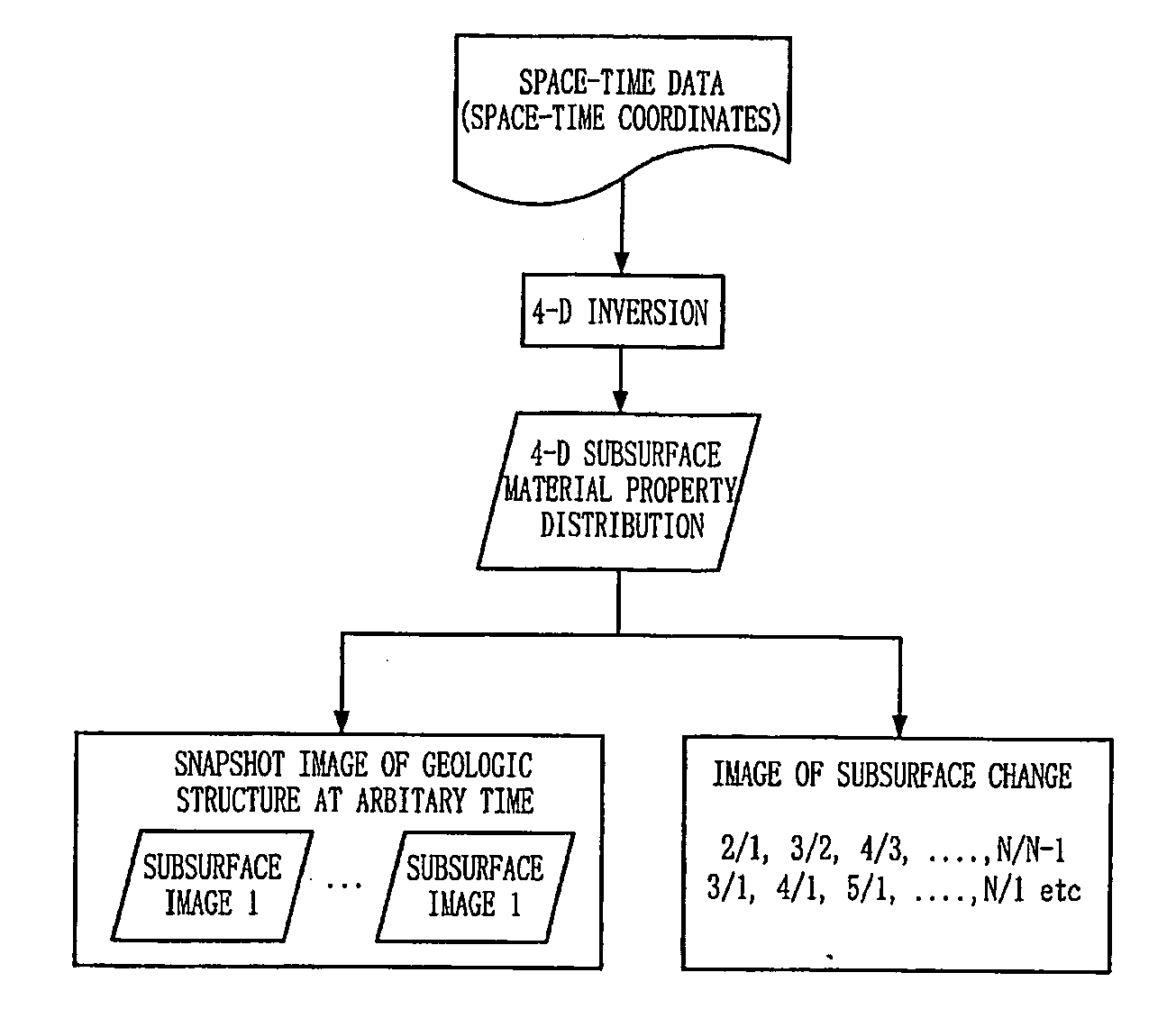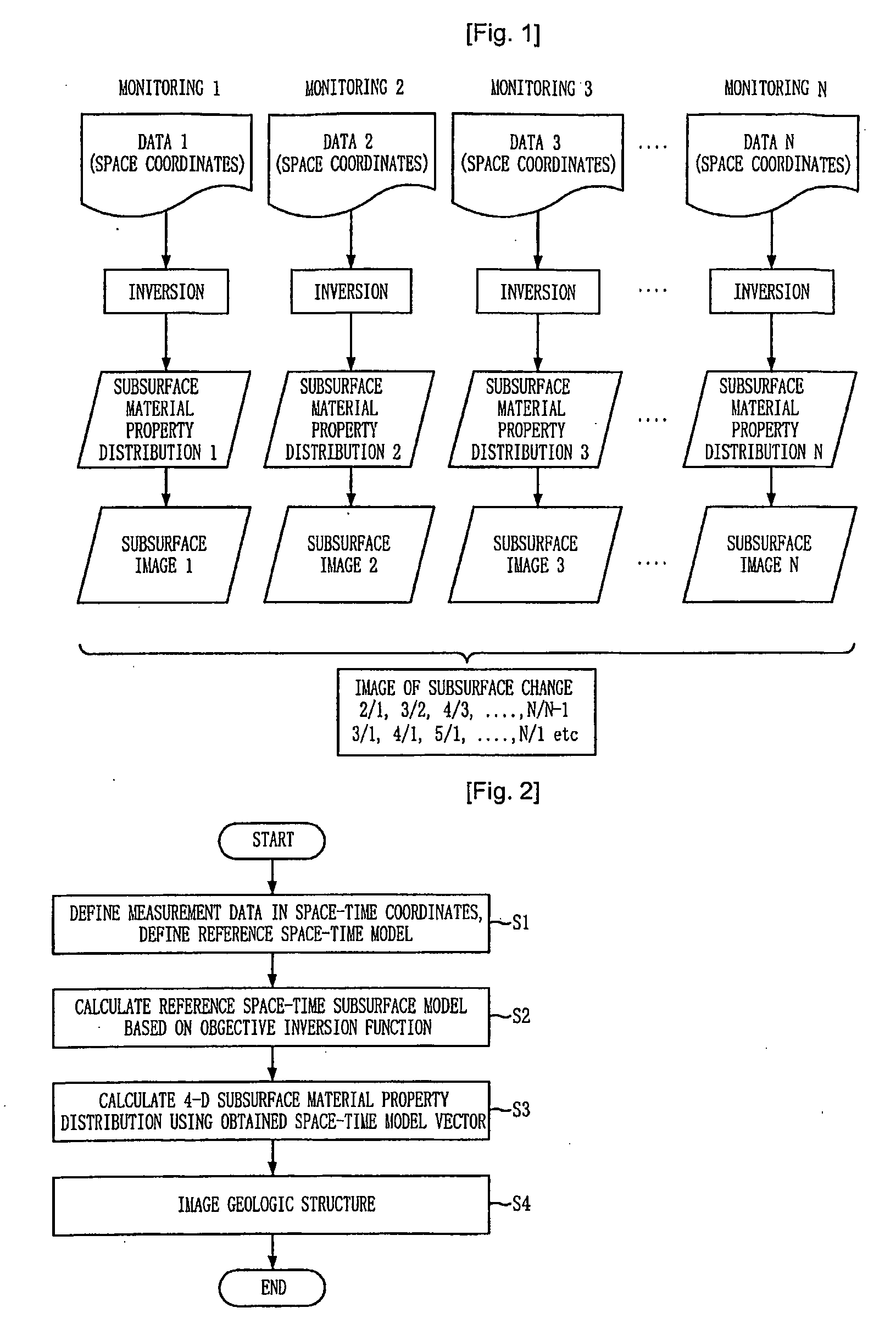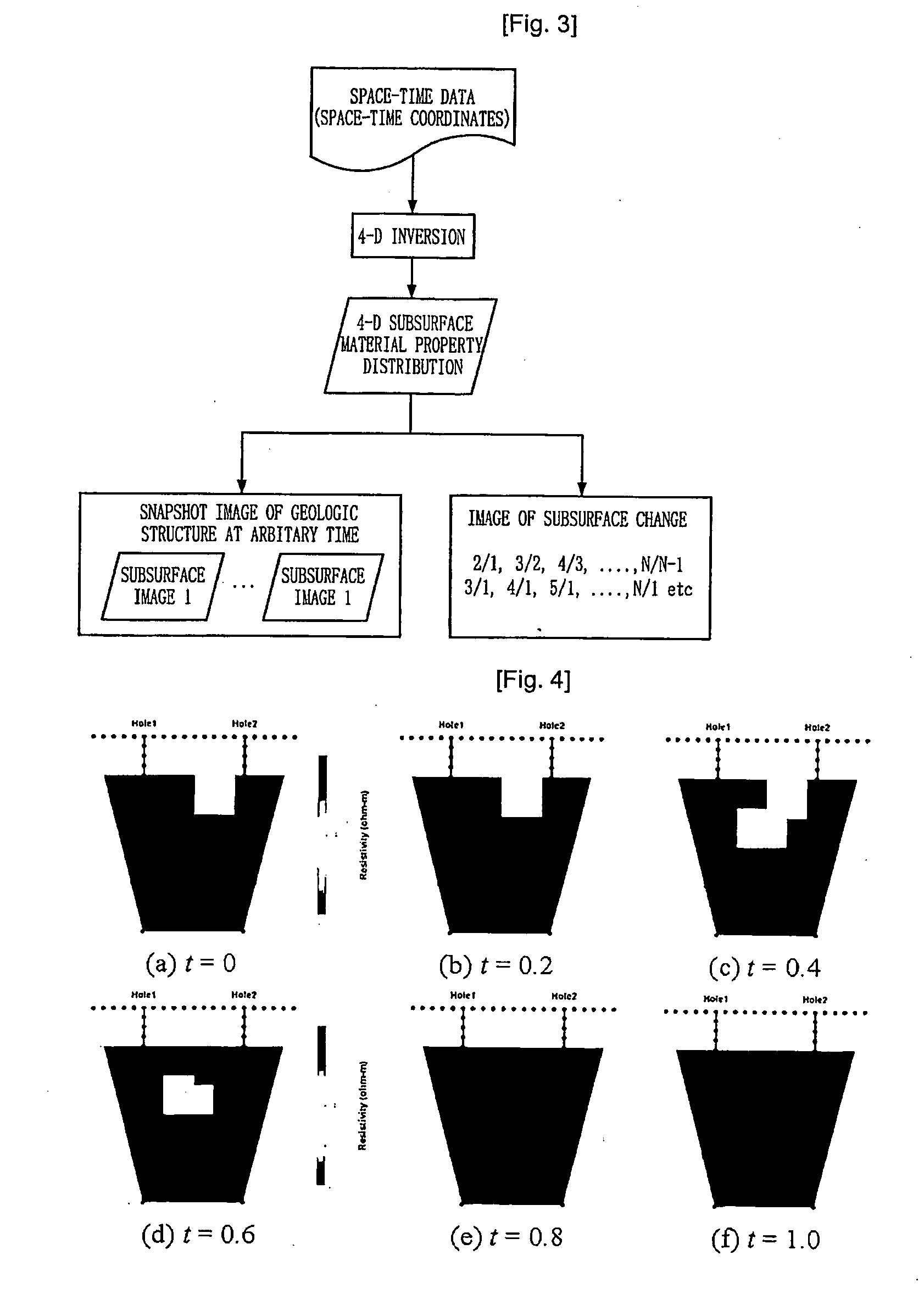4-D Inversion Of Geophysical Data And 4-D Imaging Method Of Geological Structure Using It
- Summary
- Abstract
- Description
- Claims
- Application Information
AI Technical Summary
Benefits of technology
Problems solved by technology
Method used
Image
Examples
Embodiment Construction
[0056]Hereinafter, inversion experiments to verify effectiveness of the 4-D inversion and the imaging method using it according to the present invention will be explained.
[0057]The inversion experiments were conducted using non-conductive tomography numerical modeling data, pole-dipole array being adopted as an electrode array, the space-time model being sampled into 30 space models (n=30) continuously changing. Numerical modeling was conducted for all of 30 models, and one data set is configured from the data of 30 sets. It is apparent that experiments will be much more difficult in case only one data set exists rather than in case a plurality of iterative measured monitoring data exist, when geologic structure changes severely as above. This experiment was conducted under the assumption that only one data set is obtained.
[0058]One data set is composed of 1) crosshole, 2) inline, and 3) hole-to-surface surveys.
[0059]FIG. 4 shows snapshots of the model change of subsurface space set...
PUM
 Login to View More
Login to View More Abstract
Description
Claims
Application Information
 Login to View More
Login to View More - R&D
- Intellectual Property
- Life Sciences
- Materials
- Tech Scout
- Unparalleled Data Quality
- Higher Quality Content
- 60% Fewer Hallucinations
Browse by: Latest US Patents, China's latest patents, Technical Efficacy Thesaurus, Application Domain, Technology Topic, Popular Technical Reports.
© 2025 PatSnap. All rights reserved.Legal|Privacy policy|Modern Slavery Act Transparency Statement|Sitemap|About US| Contact US: help@patsnap.com



